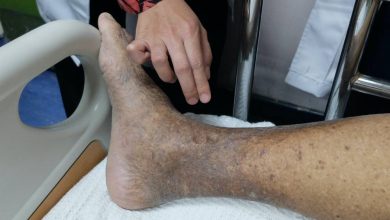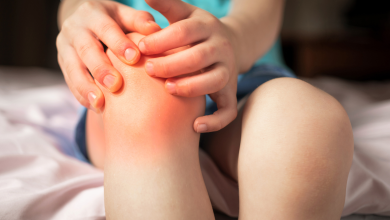Rectal Prolapse Causes, Symptoms, Diagnosis and Treatment

What is Rectal Prolapse?
Your rectum is the last segment of your large intestine before your anus. This is where poop prepares to exit your body. When poop arrives in your rectum, it triggers the urge to defecate (poop), and a network of muscles pushes the poop out through your anus. But when rectal prolapse occurs, the rectum itself travels with it, slipping down telescope-style into the anal canal — and sometimes out the other side.
“Prolapse” is the term healthcare providers use to describe any body part that has fallen from its normal position in your body. It usually means that the muscles supporting the part have weakened or deteriorated. Some weakening or deterioration is normal with aging, but extra wear and tear on the muscles can accelerate the process. Childbirth, chronic constipation or diarrhea can affect your rectum.
Who does rectal prolapse affect?
It most commonly affects females, especially those over the age of 50. Less commonly, it may occur in young children as a result of chronic diarrhea or cystic fibrosis.
How common is this condition?
It’s estimated to occur in about 2.5 in every 1000 people.
Is rectal prolapse serious?
It’s not urgently serious, but it can cause discomfort for some people, and it can lead to possible complications down the road. The most common complications are pooping difficulties, such as fecal incontinence.
Causes of Rectal Prolapse
Failure of the muscles that hold the rectum in place leads to rectal prolapse. Many things may contribute to this. Some possibilities include:
- Aging.
- Pregnancy and childbirth.
- Previous injury or surgery to your pelvis.
- Chronic constipation or diarrhea.
- Intestinal parasite infections.
- Chronic coughing or sneezing.
- Spinal cord or nerve damage.
- Cystic fibrosis.
What does rectal prolapse look like?
Rectal prolapse can look different in different people. If you have an internal prolapse, your rectum has begun to drop partway into your anus, but it hasn’t yet come out the other end. If you have a mucosal prolapse, the inside mucous lining of your rectum has turned inside-out and begun to poke out of your anus. External prolapse is when your entire rectum falls out. At first, prolapse may only occur when you poop, but eventually, it’s constant.
Symptoms of Rectal Prolapse
You might notice:
- A feeling of pressure or a bulge in your anus.
- A feeling like there’s something left inside your anus after you poop.
- A red, fleshy mass hanging out of your anus.
- Leakage of mucus, poop or blood from your anus.
- Anal pain or itching.
How do I know if I have rectal prolapse vs. hemorrhoids?
Rectal prolapse and hemorrhoids can have similar symptoms, and it’s not uncommon to mistake one for the other. Hemorrhoids — swollen blood vessels in the anus or rectum — can also cause itching, pain or bleeding. Hemorrhoids can even prolapse — slip out of your anus — and they may look similar to mucosal rectal prolapse if they do. After all, they occur within the same red, fleshy mucous lining.
Both hemorrhoids and rectal prolapse can occur during and after pregnancy, or in conjunction with chronic constipation or diarrhea. While rectal prolapse has many possible causes, hemorrhoids are mainly caused by excessive straining. They are also temporary and will go away on their own after a week or so. Rectal prolapse is chronic and progressive. The symptoms may change, but it won’t go away.
Diagnosis of Rectal Prolapse
Your healthcare provider will review your medical history, then examine your rectum. They might ask you to activate your muscles as if you were pooping. To confirm the diagnosis or rule out other possible problems, they might use one or several of the following tests:
- Digital Rectal Exam. This is a physical exam using lubricated gloved fingers.
- Defecography. This is an imaging study of your muscles when you poop, using an X-ray or MRI.
- Anorectal Manometry. This test measures the strength and tightness of your anal sphincters.
- Lower GI Series (barium enema). A series of video X-rays of your lower gastrointestinal tract.
- Colonoscopy. This test examines the inside of your large intestine with a flexible scope.
- Electromyography (EMG): This test determines if nerve damage is the reason why the anal sphincters are not working properly. It also examines muscle coordination.
If you have weak pelvic floor muscles, you may have one or several other conditions in addition to rectal prolapse. Your healthcare provider may want to check for these other conditions so that they can address them all together. Possible secondary conditions include:
- Pelvic floor dysfunction.
- Rectocele.
- Urinary incontinence.
- Small bowel prolapse.
- Vaginal prolapse.
- Bladder prolapse.
Treatment of Rectal Prolapse
Will Rectal Prolapse go away on its own?
Not in adults. If rectal prolapse occurs in your child, it might go away after you treat the cause. For example, if your child has hard stools, diarrhea or a parasite infection, treating these conditions will relieve the stress on their pelvic floor muscles. The muscles will repair themselves as your child continues to grow. If you’re an adult, however, rectal prolapse won’t improve without surgery.
What happens if rectal prolapse is left untreated?
If it’s not causing bothersome symptoms, you may be able to live for some time with rectal prolapse, taking care of it at home. Taking care of it means pushing your rectum back inside manually. Healthcare providers recommend that you lie on your side with your knees to your chest and use a wet, warm cloth to gently push your rectum back into place. However, prolapse will continue to worsen over time.
Untreated rectal prolapse can lead to several possible complications, including:
- Fecal incontinence. As your anal muscles continue to stretch, you may have increased difficulty holding in gas and poop. Of those with rectal prolapse, 50% to 75% of people report this complication.
- Constipation. Bunching of the rectum and muscle coordination problems may cause you difficulty evacuating your stool. Some people have alternating constipation with incontinence.
- Rectal ulcers. Friction and exposure of the mucous lining of your rectum may cause rectal ulcers and painful sores which can bleed. Uncontrolled bleeding could lead to anemia.
- Incarceration. An “incarcerated” rectum gets stuck hanging out of your anus and can’t be pushed back in. The danger of this is that it could become cut off from blood supply (“strangulation”). This could lead to tissue death and decay of the rectum (gangrene).
How do you fix rectal prolapse?
There are several surgical approaches to fixing rectal prolapse. Which procedure you have will depend on the specifics of your condition. For generally healthy adults, the first choice is usually a rectopexy, which is a procedure to repair your rectum through your abdomen. However, some people might not be good candidates for abdominal surgery. In these cases, rectal surgery is another option.
Abdominal approach (rectopexy)
This procedure restores your rectum to its original position in your pelvis. Your surgeon will attach your rectum to the back wall of your pelvis (your sacrum) with permanent stitches. They may also reinforce it with mesh. These will hold your rectum in place long enough for scar tissue to develop, which will hold it in place after that. Rectopexy has a 97% long-term success rate in fixing rectal prolapse.
Depending on the judgment and experience of your surgeon, you may have your rectopexy by either open abdominal surgery or minimally invasive (laparoscopic) surgery. Open surgery means opening up your abdominal cavity to access your organs. Laparoscopic surgery is done through small “keyhole” incisions, using a small camera, and is sometimes done with the use of a surgical robot. Both procedures are done under general anesthesia.
If you’ve had a history of chronic constipation, and if this was a contributing factor to your rectal prolapse, your surgeon may suggest a partial bowel resection at the time of your rectopexy. That means removing a section of your colon. Your surgeon can identify the part of your colon where difficulties with constipation tend to occur. Removing the problem section often improves bowel function afterward.
Rectal approach (perineal)
If abdominal surgery isn’t an ideal option for you, your surgeon may approach your rectal prolapse through your anus. Rectal surgery doesn’t always require general anesthesia as abdominal surgery does. Some people can have it with epidural anesthesia. The rectal or “perineal” approach may also be a better choice if you have a very minor prolapse, or if your rectum is stuck on the outside (incarcerated). There are two common procedures:
Altemeier procedure. In this procedure, your surgeon pulls the prolapsed rectum out through your anus and removes it. They may also remove the lower part of the colon (sigmoid colon) if it is involved in the prolapse (proctosigmoidectomy). Then they sew the two ends of your large intestine (your remaining colon and your anus) back together. The new end of your colon now becomes your new rectum.
This procedure is less invasive than open abdominal surgery and easier to recover from, but its disadvantage is that prolapse may recur afterward. One reason is that the new rectum made from your colon is not as strong as your original rectum was. Because of this, some surgeons combine the altemeier procedure with a “levatoroplasty” — tightening the pelvic floor muscles by sewing them closer together.
Delorme procedure. If you only have a mucosal prolapse, or a small external prolapse, your surgeon may choose a more minor procedure. The Delorme procedure only removes the prolapsed mucosal lining of your rectum. Your surgeon then folds back the muscle wall of the rectum onto itself and stitches it together inside your anal canal. The double muscle wall helps to reinforce the rectum.
What are the possible risks or complications of rectal prolapse surgery?
All surgeries come with a low risk of certain general complications, including:
- Bleeding.
- Infection.
- Blood clots.
- Injury to nearby organs.
- Anesthesia complications.
Additional risks associated with rectal prolapse surgery include:
- Anastomotic leak. If the two ends of your bowel that were severed and reconnected don’t heal correctly, it may cause your bowel to leak, requiring another surgery to repair.
- Constipation. For some people, constipation gets worse after surgery, and sometimes it occurs even if you didn’t have it before. Scar tissue in your bowels might be one reason.
- Sexual dysfunction. Rectopexy has a small (1% to 2%) chance of damaging a nerve connected with male sexual function.
What is the outlook if I have Rectal Prolapse?
It may not be a major problem at first, but it will continue to get worse over time. If you already have bowel problems, you should probably see your healthcare provider sooner than later. Most of the time, surgery will fix rectal prolapse, but it may return in a small number of people. Surgery also has mixed results for bowel complications. These problems may need additional treatment to be solved.
How can I prevent rectal prolapse from occurring or from recurring after surgery?
- Treat chronic bowel disorders. Don’t let chronic constipation or diarrhea persist. Ask your healthcare provider about Rectal Prolapse treatment options, including lifestyle changes and medications.
- Strengthen your pelvic floor. Kegel exercises can help keep your pelvic muscles fit and strong. They have been shown to prevent incontinence as well as possible pelvic organ prolapse.
Reference: https://my.clevelandclinic.org/health/diseases/14615-rectal-prolapse
By : Natural Health News




